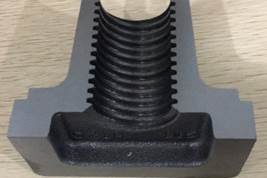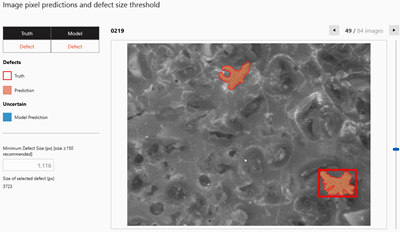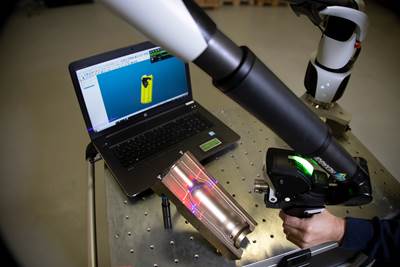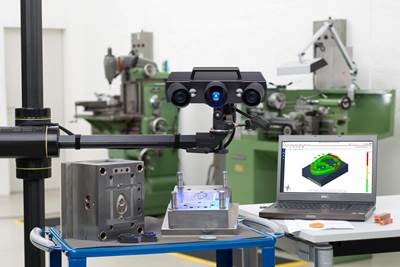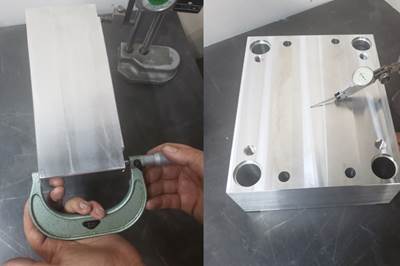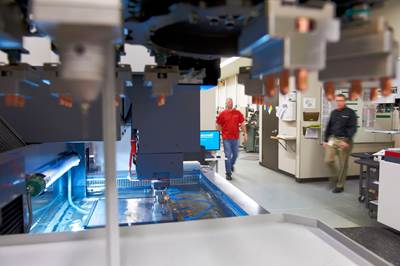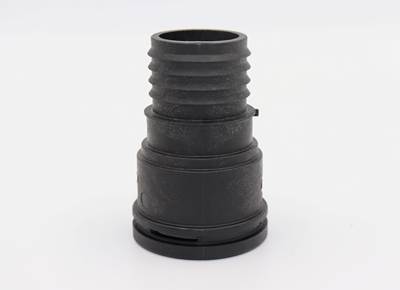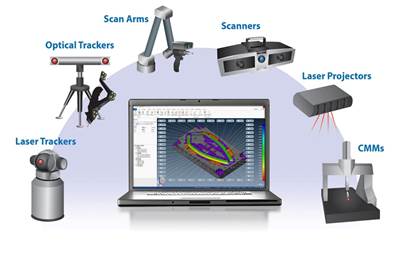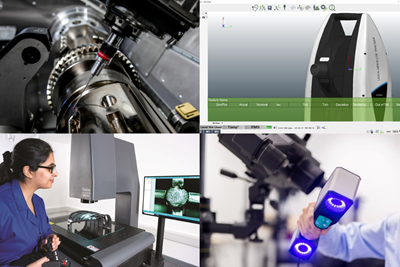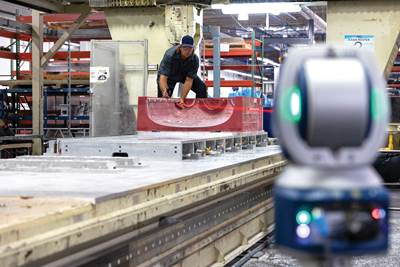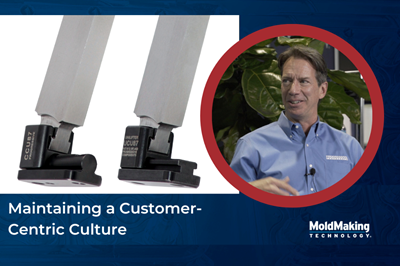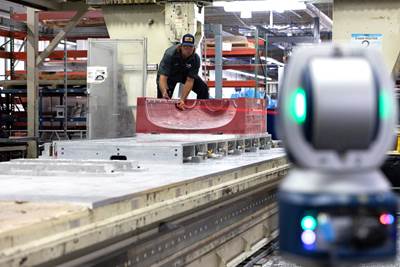Inspection and Measurement
Inspection and measuring equipment includes all of the tools and devices—such as coordinate measurement machines and software, probes, vision systems, balance machines, calibrators and scanners—that are used to verify that a mold and/or part’s dimensions all conform to the tolerances required by the part’s design.

ESSENTIAL READING
VIEW ALLBreaking Down 3D Scanning in Moldmaking
Identifying 3D scanning requirements and implementing the appropriate technology.
Read MoreFour Uses for Tactile Probing and Laser Scanning in Moldmaking
Laser trackers with their probing and scanning capabilities are embedded in almost every stage of the moldmaking process.
Read MoreThree Advances in Vision Measuring Technology for Moldmaking
Next-generation metrology solutions are streamlining shopfloor automation and quality control for mold builders.
Read MoreIntuitive, Easy-to-Use Inspection Software for Portable Probing and Scanning Simplifies Mold Measurement
Enhanced inspection software and hardware with portable measurement, analysis and reporting improves productivity.
Read MoreFive Things a Mold Builder Should Know about Non-Contact Blue Light 3D Scanning
Mold builders who use non-contact blue light 3D scanning reap the benefits of digitization throughout the mold manufacturing process.
Read MoreStatistical Process Control/Statistical Quality Control Lessons for the Small Mold Builder
A proper statistical process control/statistical quality control system can catch errors early to ensure machining consistency of molds and mold bases.
Read MoreLatest Inspection & Measurement News And Updates
7 Measurement Innovations Transforming Moldmaking
Smart sensors and sophisticated process and measurement data management are driving intelligent moldmaking to new heights.
Read MoreFour Micro Tooling Considerations
Issues involving gating, ejection, mold splits and direction of pull are of special concern when it comes to micro tooling.
Read MoreBreaking Down 3D Scanning in Moldmaking
Identifying 3D scanning requirements and implementing the appropriate technology.
Read MoreHow to Harness 3D Scanning for Mold Tool Repairs
3D scanning supports the repair of molds with no history, drawings or design files.
Read MoreHandheld Scanners to Democratize 3D Scanning Environment
IMTS 2024: Hexagon introduces its first handheld 3D scanning devices, Atlascan Max and Marvelscan, to capture crucial data easily and more quickly.
Read MoreTechnology Review and Sourcing Guide 2024: Inspection/ Measurement
Inspection/ measurement equipment can include all tools and devices used to verify molds and part dimensions conform to the tolerances required by the part’s design. Access more information about inspection/ measurement in this exclusive, online-only content, including a suppliers list, products, services and more.
Read MoreFeatured Posts
Software Strategy for Automated Mold Inspection
Consider inspection software with a CAD/CAM platform that supports model-based definition, works with all CAD files, and drives all fixed and portable CMMs.
Read MoreUsing CT Scanning to Qualify Molds Faster
Software and hardware advances reduce dimensional inspection with part-to-CAD by 70%.
Read MoreQuality Control Technologies Geared for Injection Molds
These latest technology solutions, from noncontact gages to test probes and automated inspection systems, aim to minimize production risks and ensure optimal quality control practices for moldmaking.
Read MoreTechnology and Sourcing Guide 2023: Inspection/Measurement
Inspection and measurement equipment includes all of the tools and devices used to verify that mold and part dimensions conform to the tolerances required by the part’s design
Read MoreVIDEO: Maintaining a Customer-Centric Culture
Progressive Components President Glenn Starkey talks about the importance of the customer and culture when developing technology solutions for the moldmaking industry.
WatchThree 3D Scanner Investment Considerations
Mold builders taking advantage of laser and software advancements for portable 3D measurement tools can reduce inspection and measurement times.
Read MoreFAQ: Inspection & Measurement
How can moldmakers digitize a part for inspection?
The first step of digitization in molding is 3D scanning the part. 3D data can be easily captured on site, and users benefit from swift run times, low cost, efficient handling and easy communication. The second step is processing the 3D scan data into CAD data by converting the point cloud generated in the 3D scan into CAD/CAM-capable data. The processing of the STL data produced by the 3D scanner is then reconstructed in CAD.
The part’s characteristics can be recognized based on the scan points, and these points can be replaced with CAD-capable surfaces. This process is called surface reconstruction. With the finished data of the CAD/CAM solid model, the mold build can start.
Traditional mold measuring methods are generally done manually using contact measuring tools such as vernier measuring tools or micrometers. A few attributes, such as mold width, height and depth, can be measured, while the surfaces’ curvature and concave surfaces are challenging to measure. These measuring methods can be complicated and time-consuming and make it challenging to ensure large mold measurements’ quality and accuracy.
So, noncontact 3D scanner measurement is gradually becoming one of the primary mold inspection and measurement methods. There is a wide array of 3D inspection tools powered by different scanning technologies. For example, blue light 3D scanning. This process precisely captures small and filigree details of small- to medium-sized objects rigidly requiring persistent performance in their product lifecycle.
How can automation improve overall shop floor measurement?
Shop floor inspection can be a tedious or relatively innocuous part of daily operations, depending on the measurement and analysis methods shops use. However, automated measurement equipment solutions, comprising a CNC coordinate measuring machine (CMM), flexible part fixturing, and automated part handling systems, enable operators to quickly and easily change the configuration in hours versus days to accommodate completely different or redesigned parts on the shop floor during production.
The automation also eliminates the need for dedicated measurement equipment for each mold, mold component, or even molded part, while simultaneously streamlining the analysis and storage of measurement data into smart systems. A smart system combines computer-integrated manufacturing, high levels of adaptability, rapid design changes and digital information technology to achieve a system that monitors the entire process.
For example:
- Equipment status
- Working time
- Idle time
- Maintenance
- Process stopped, the attention required
- Equipment condition
- Preventative maintenance
- Potential component failure predictability
- Measurement data management
- Monitoring for compliance with manufacturing design
- Process control for constant adjustment feedback
- Historical data archiving
Source: Improve Overall Inspection with Automated Measurement
What should moldmakers consider when choosing a measurement system?
Cost and value are important considerations when determining the value of one measurement solution over another for a particular application. However, a more essential consideration is the type of part or mold that needs to be measured and measurement turnaround time. For example, a company is building molds for a component that is the size of a soda bottle. For quality inspection, what is the fastest approach? What is currently being used to inspect molds, such as hand gages or traditional CMMs for tactile measurements?
Further considerations include the measurement task at hand. Is it a mold’s surface geometry or points or features? How can this data be moved toward process inspection? Does the application require 100-percent surface coverage that can be captured using a 3D optical scanner with a larger field of view? Does the operator need to verify a small, concentrated area of a mold, which is an ideal application for a flexible and portable measuring arm? Are accurate baseline scans of molds needed, or is it a reverse engineering job? Once these needs are clarified, a moldmaker can better determine the appropriate technology to address its multi-faceted measurement and inspection requirements.
No matter what the solution is, the metrology options today are light years ahead of yesterday’s tools, with easier-to-use software and hardware interfaces. But there is more to the story than that. 3D data-driven processes integrated throughout the product development cycle are the wave of things to come in the smart factory, and that includes metrology. Inside the smart factory, systems will continuously collect and process data during production operations, providing speed and confidence for fast decision-making and rapid responses to shopfloor issues. Moldmakers who embrace a digital thread will make their operations more flexible and adaptable for a new level of quality control.
Source: Data-Driven Quality Control



